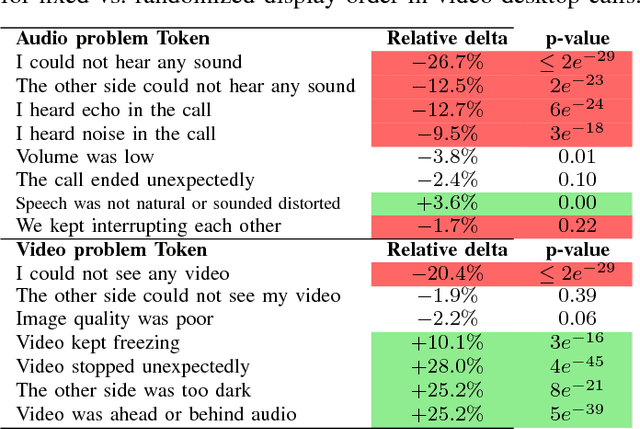On Design of Problem Token Questions in Quality of Experience Surveys
Paper and Code
Aug 19, 2018

User surveys for Quality of Experience (QoE) are a critical source of information. In addition to the common "star rating" used to estimate Mean Opinion Score (MOS), more detailed survey questions (problem tokens) about specific areas provide valuable insight into the factors impacting QoE. This paper explores two aspects of the problem token questionnaire design. First, we study the bias introduced by fixed question order, and second, we study the challenge of selecting a subset of questions to keep the token set small. Based on 900,000 calls gathered using a randomized controlled experiment from a live system, we find that the order bias can be significantly reduced by randomizing the display order of tokens. The difference in response rate varies based on token position and display design. It is worth noting that the users respond to the randomized-order variant at levels that are comparable to the fixed-order variant. The effective selection of a subset of token questions is achieved by extracting tokens that provide the highest information gain over user ratings. This selection is known to be in the class of NP-hard problems. We apply a well-known greedy submodular maximization method on our dataset to capture 94% of the information using just 30% of the questions.
 Add to Chrome
Add to Chrome Add to Firefox
Add to Firefox Add to Edge
Add to Edge